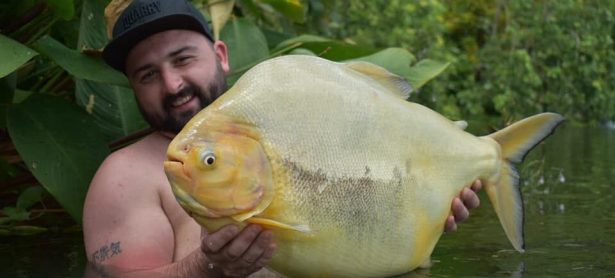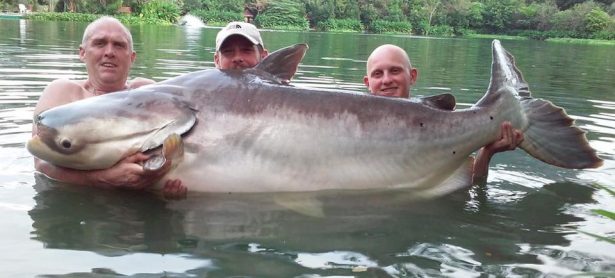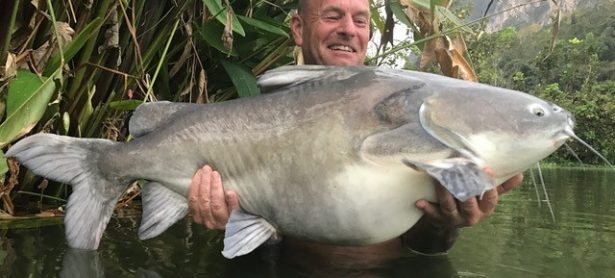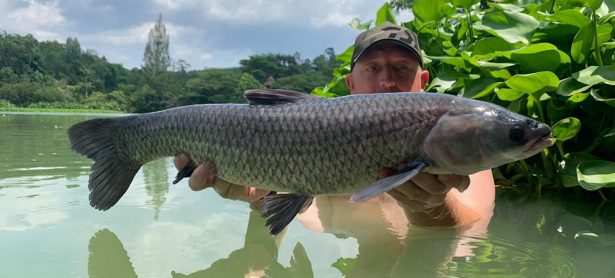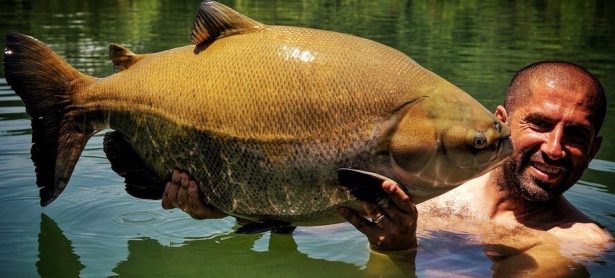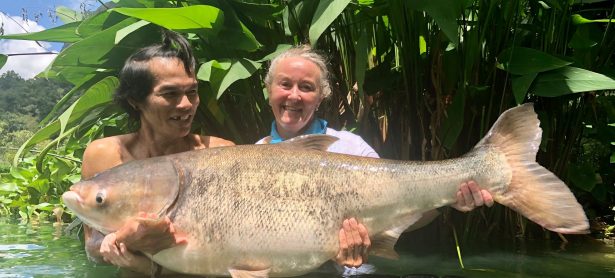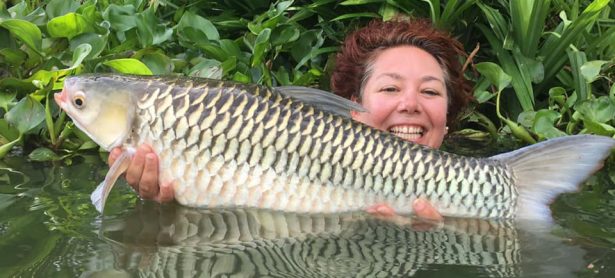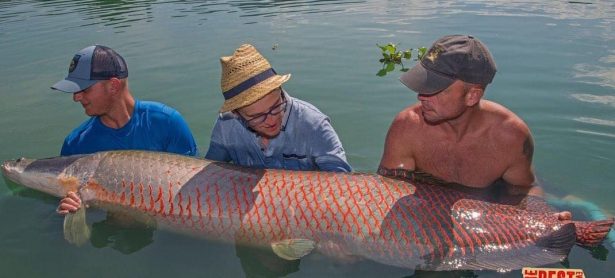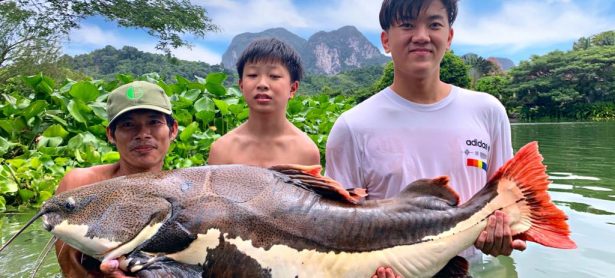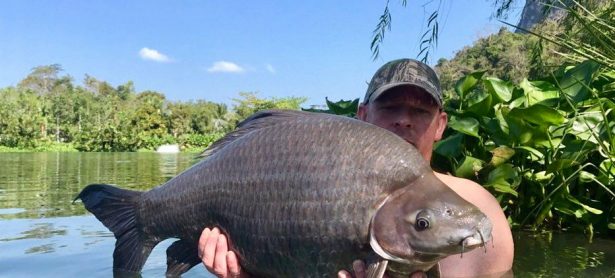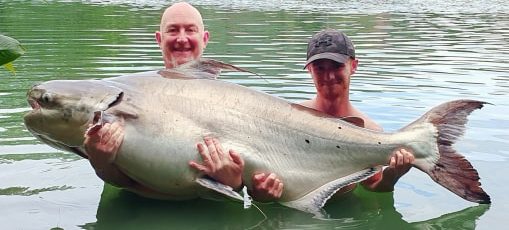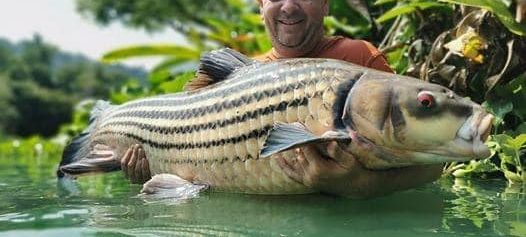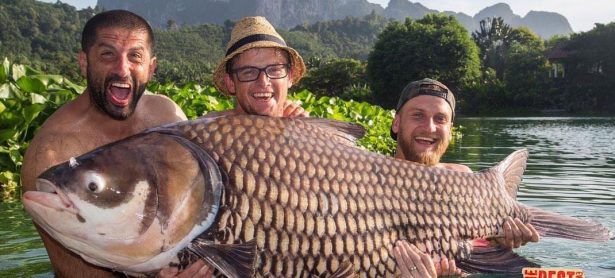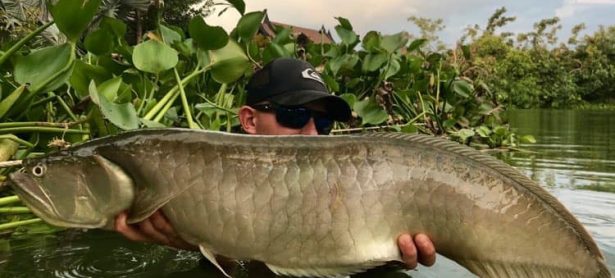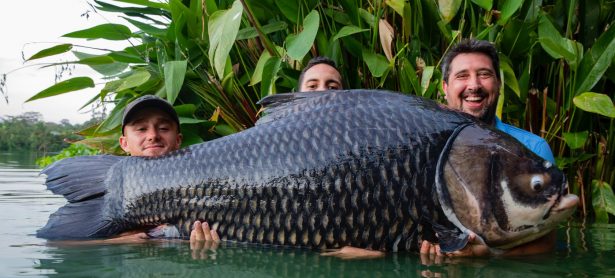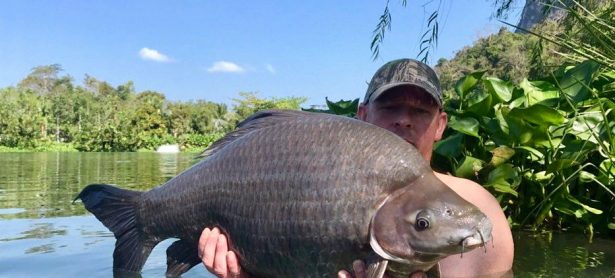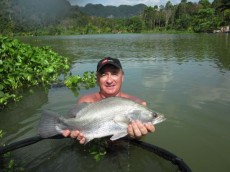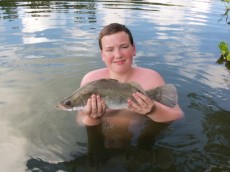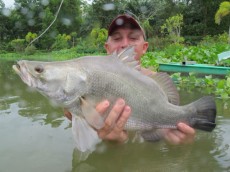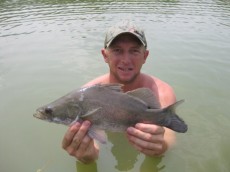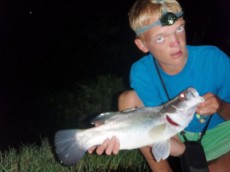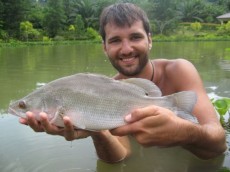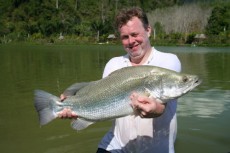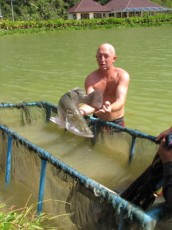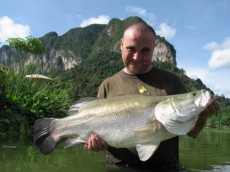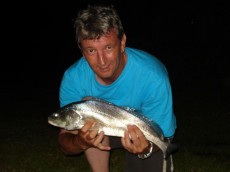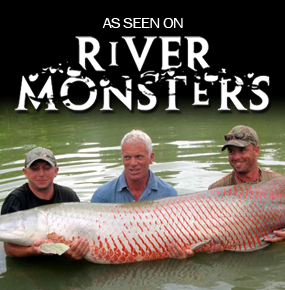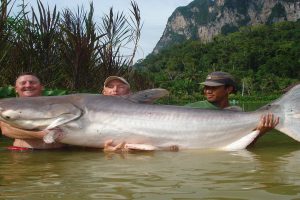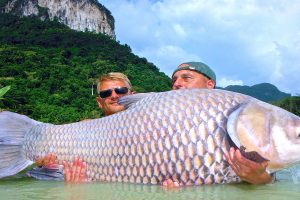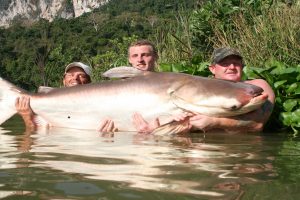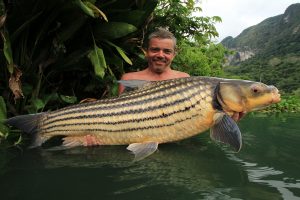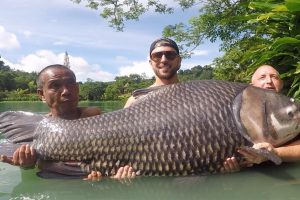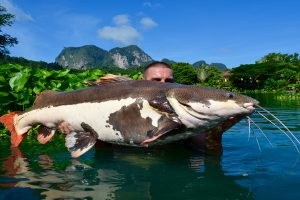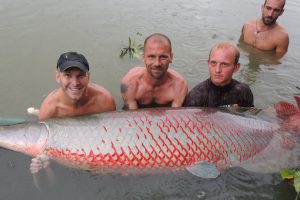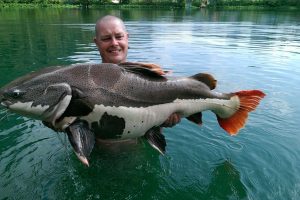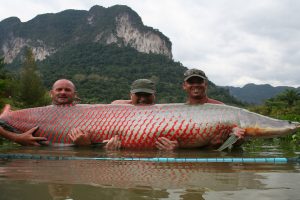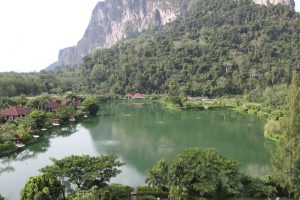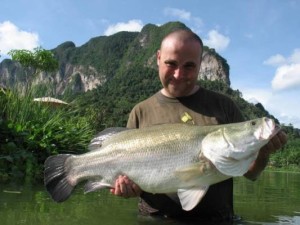 Name: Nile perch.
Name: Nile perch.
Other names: Giant perch, Victoria perch, African snook.
Species: Lates niloticus.
Thai name: Pla khapong perch Nile.
Max length: 2.5m.
Max weight: 250kg.
IGFA record: 104.32kg (230lb).
Diet: fish, frogs, crustaceans and waterfowl.
The Nile perch is a new species to Gillhams only introduced in February 2010, and as such we cannot really give an accurate idea of how to target them. Up to October 2010 just two have been caught on bait, and one lost on fly. We stocked these fish at 10lb and they have doubled in size in five months! Due to their rapid decline in the wild and their popularity as a sporting fish, we are sure they will eventually take over as one of the main target fish for our anglers. We are confident they will obtain weights over 50kg within the next five years! In the wild they are targeted with lures, but unfortunately these are banned at Gillhams as our arapaima swallow lures and die. Live bait would also be an option, but to stop the spread of disease from cast off injured fish these are also banned here.
Time is going to tell how to target these fish, but at present dead baits fished either on the bottom or under a float seems the best bet. We see them on daily basis pounding into the Java barb shoals, so cast a float rig baited with dead fish into this area. Also when they are feeding in this manner you can target them with fly tackle. A large barbless fry pattern fly will take them, but as our arapaima also feed in the same way you must use a 12wt outfit with minimum 35lb leader as you can hook either species. You would also need a short heavy mono trace from the fly due to the Nile perch having sharp teeth. If you are fortunate enough to catch one, please handle them as little as possible, have your camera at the ready and take a very quick picture. Beware of the sharp spines on their top fin, and the sharp plates on their gill covers. The only way to release these fish safely seems barbaric but it works; they must be thrown head first back into the lake! Obviously once they attain sizes over 50kg this will not be possible, but by then we will have devised a safe way to release them.
General facts on the Nile perch:
The Nile perch are not indigenous to Thailand; they have a large distribution range throughout much of the Afrotropic ecozone. They are found in all major river basins in these countries, including the Nile, Chad, Senegal, Niger, Volta and Congo. Nile perch have been introduced to many lakes in Africa, including Lake Victoria and the artificial Lake Nasser. Nile perch were introduced to Lake Victoria in East Africa in the 1950s and since then they have been fished for commercially.
The fish’s introduction to Lake Victoria has stimulated the establishment of large fishing companies there. In 2003 Nile perch earned 169 million euro in sales to the EU. Another income is the sport fishing tourism in the regions of Kenya, Uganda and Tanzania, but the long-term outlook is less clear, as overfishing is now reducing their populations as it is in lake Nasser. The overfishing has pushed the Nile perch to near extinction in the wild, placing yet another mega fish on the endangered species list. However they are a very popular farm fish due to fast growth rates and high commercial value, and there are increasing numbers being farmed in Thailand and throughout Asia, making their way to commercial fisheries such as Gillhams.
The Nile perch is silver in colour with a blue tinge. It has a distinctive dark black eye with a bright yellow outer ring. Females grow to a larger size than males. In the wild there are normally twice as many males as females. A female Nile perch can produce up to 16 million eggs at a time. The female Nile perch commence spawning when they have grown to 50 centimeters. When the female has deposited the eggs and they have been fertilized by the male, the eggs are left alone. The Nile perch do not guard eggs or raise fry. Adult Nile perch are somewhat similar to adult barramundi, but whereas the barramundi is not capable of breeding in freshwater lakes, the Nile perch are. Juvenile Nile perch are camouflaged by asymmetrical broad markings on their body and a number of dark markings that spread out from the area around their eyes. These markings will gradually fade away as they grow older.
The state of Queensland in Australia levies heavy fines on anyone found in possession of a living Nile perch, since it competes directly with the native barramundi, which is similar but does not reach the same size.



